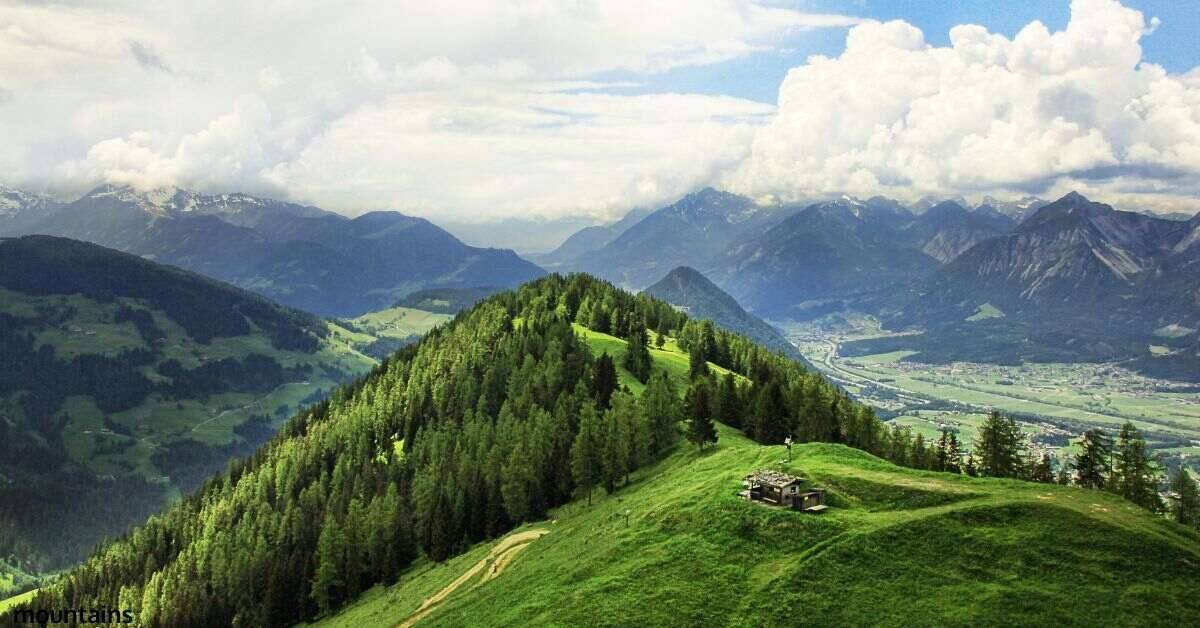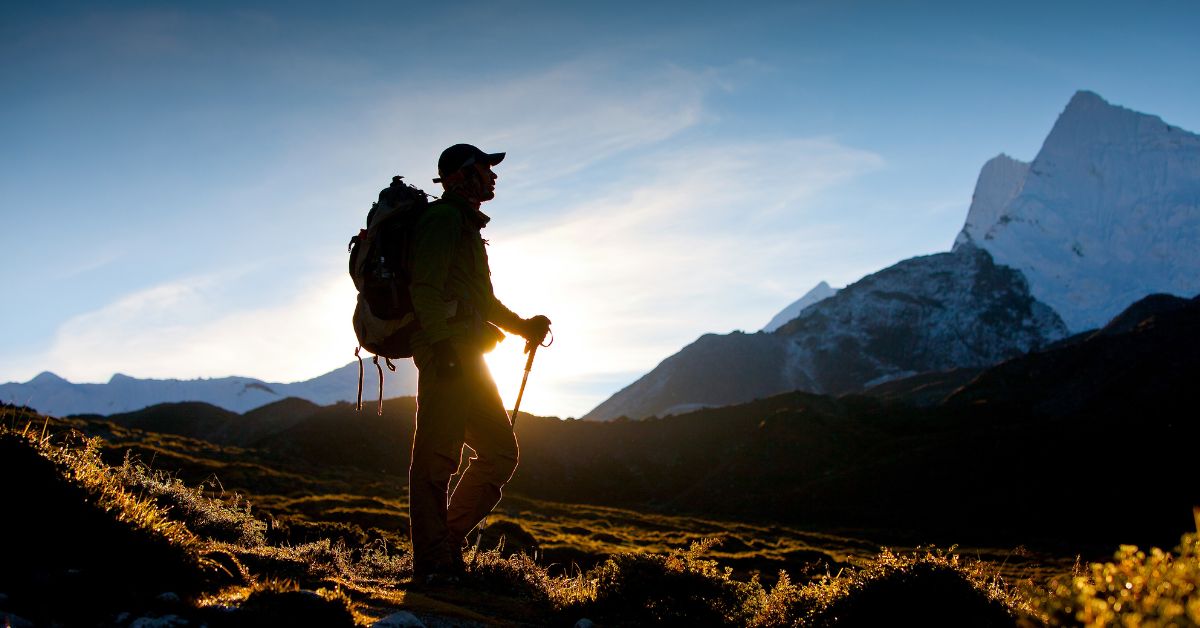Are you ready to conquer the mountains and embark on a thrilling 5-mile hike? If you’re wondering just how long it takes to tackle those rugged terrains, you’ve come to the right place. In this informative post, we’ll dive straight into the nitty-gritty details of hiking 5 miles in the mountains. Let’s get started.
How Long Does it Take to Hike 5 Miles in the Mountains According to Naismith’s Rule?
Naismith’s Rule is a commonly used guideline to estimate the time required to hike a certain distance, considering the terrain and elevation gain. According to Naismith’s Rule, an average hiker can cover 3 miles (about 5km) per hour, plus an additional hour for every 2,000 feet of elevation gain.
Therefore hiking 5 miles in mountainous terrain with an elevation gain of 200 feet takes an average hiker about 2 hours and 40 minutes. If you are not an experienced hiker, you will likely take 3-4 hours to complete the hike.
Remember that Naismith’s Rule is just a general estimate and should be adjusted based on individual capabilities and the specific conditions of the hike. Factors like weather conditions, trail conditions, and the difficulty of the terrain can significantly impact the actual time required.
How to Hike 5 Miles in Mountainous terrain faster?
Hiking 5 miles in mountainous terrain can be physically demanding, but with proper preparation and technique, you can increase your speed and efficiency. Here are some tips to help you hike faster in mountainous terrain:
1. Cardiovascular Fitness
Prioritize cardiovascular exercises like running, cycling, or stair climbing to improve your endurance and stamina. This will enable you to hike at a faster pace for longer durations.
2. Strength Training
Incorporate strength training exercises to build lower body strength, targeting muscles such as quadriceps, hamstrings, and calves. Strong leg muscles will help you tackle steep inclines more easily.

3. Proper Footwear
Invest in a good pair of hiking boots that provide ankle support and have a firm grip on slippery surfaces. Well-fitting boots will enhance your stability and reduce the risk of injuries.
4. Trekking Poles
Utilize trekking poles to distribute your weight and reduce strain on your legs, especially during steep ascents and descents. They also provide stability and improve balance.
5. Proper Gear
Wear moisture-wicking clothes that are suitable for the weather conditions. Layering is vital in regulating body temperature. Additionally, carry a lightweight backpack with essentials like water, snacks, a map, a compass, and a first aid kit.
6. Proper Technique
Take shorter, quicker steps while ascending to conserve energy and maintain momentum. On descents, lean slightly forward and take longer strides, but be cautious to avoid tripping.
7. Plan and Pace
Familiarize yourself with the trail beforehand and plan your route accordingly. Break the hike into smaller sections and set achievable goals for each team. Pace yourself consistently throughout the trek, avoiding overexertion in the beginning.
8. Snacking
Carry energy-rich snacks such as nuts, dried fruits, and energy bars to fuel your body during the hike.
How Much Water Should You Carry When Hiking 5 Miles in the Mountains?
When hiking in the mountains, it is crucial to stay properly hydrated to ensure your safety and well-being.
The amount of water you should carry when hiking 5 miles in the mountains depends on various factors such as weather conditions, the intensity of the hike, individual needs, and personal hydration habits.
On average, it is recommended to carry at least 2 liters (or 67 ounces) of water per person for a 5-mile hike in mountainous terrain. The mountainous terrain can be physically demanding, causing increased sweating and exertion.
If the weather is exceptionally hot or if you tend to sweat heavily, consider increasing your water intake. It is always better to carry slightly more water than you think you’ll need. You can wear these high-quality hiking hats when trekking in hot weather.
Additionally, being aware of available water sources along the trail is crucial. Suppose there are reliable natural water sources such as streams or springs. In that case, you can carry a smaller amount of water and refill along the way using a water filter or purification tablets.
However, be cautious and research the trail beforehand to ensure water sources are safe and accessible.
How Many Calories Do You Burn Hiking 5 miles In Mountainous Terrain?
As a general guideline, hiking in mountainous terrain burns between 400 and 550 calories per hour.
Let’s consider an example: a 150-pound person hiking 5 miles at a moderate pace of 3 miles per hour. This individual would burn approximately 1,312 calories during the hike. If the same person were to hike at a faster pace of 4 miles per hour, they would burn about 1,575 calories for the same distance.
Elevation gain also influences calorie expenditure. For every 1,000 feet of elevation gain, an additional 50-100 calories can be burned. Suppose our 150-pound hiker tackles a 5-mile trail with a 2,000-foot elevation gain. In that case, they would burn approximately 1,662 calories during the hike.
It’s important to note that these figures are estimates, and actual calorie burn may vary based on individual factors like fitness level and weather conditions. However, they provide a general idea of the calorie expenditure during a 5-mile hike in mountainous terrain.
Related: How Long Does It Take To Hike 18 Miles?

Is a 5-Mile Hike in Mountainous Terrain Great for Beginners?
A 5-mile hike in mountainous terrain may not be ideal for beginners, especially if they have little to no hiking experience. While it is important to challenge oneself and push physical limits, it is equally important to prioritize safety and enjoyment.
Mountainous terrain often presents various challenges that can be overwhelming for beginners. It typically involves steep inclines, uneven surfaces, and potentially unpredictable weather conditions.
These factors can increase the risk of accidents, such as slips or falls, especially for those not accustomed to such conditions. Additionally, the altitude and thinner air at higher elevations can make breathing more challenging, causing fatigue and exhaustion more quickly.
For beginners, it is advisable to start with shorter and less challenging hikes on relatively flat terrain to build stamina, strength, and familiarity with hiking essentials. This allows beginners to gradually acclimate to the physical demands of hiking and learn how to navigate trails effectively.
It is also crucial to research and plan the hike thoroughly, including checking weather conditions, trail difficulty, and availability of amenities like water sources and restrooms.
We hope you now understand how long it takes to hike 5 miles in the mountains. It is always recommended to plan accordingly, carry the necessary supplies, and be prepared for unexpected challenges. Ultimately, the experience of hiking in the mountains is not solely about the time it takes, but also immersing oneself in nature’s beauty.
